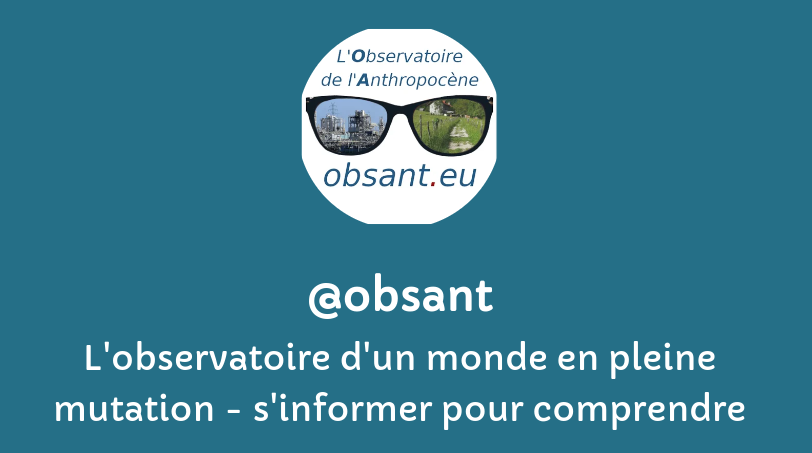Les champs auteur(e)s & mots-clés sont cliquables. Pour revenir à la page, utilisez le bouton refresh ci-dessous.
filtre:
usa
The report, which is being used to justify the rollback of a huge number of climate regulations, is full of misinformation—with many claims based on long-debunked research. The report, which is being used to justify the rollback of a huge number of climate regulations, is full of misinformation—with many claims based on long-debunked research.
US President Donald Trump's administration is revising past editions of the nation's premier climate report—its latest move to undermine the scientific consensus on human-caused global warming.
The White House has instructed NASA employees to terminate two major, climate change-focused satellite missions. As NPR reports, Trump officials reached out to the space agency to draw up plans for terminating the two missions, called the Orbiting Carbon Observatories. They've been collecting widely-used data, providing both oil and gas companies and farmers with detailed information about the distribution of carbon dioxide and how it can affect crop health.
The Trump administration is releasing its proposal to undo the “endangerment finding,” the long-standing rationale and legal imperative for regulating greenhouse gases under the Clean Air Act
Higher methane emissions from gas infrastructure have negated much of U.S. climate progress in the past two decades, a new study shows.
in January, a group of present and former Republican state officials gathered at a posh resort in Sea Island, Georgia, together with conservative leaders, for a two-day lesson in how to dismantle corporate America’s most ambitious response to climate change. At the Cloister, with its golf courses, tennis courts, and beaches, ESG was denounced as a sinister force undermining free markets and democracy.
The Environmental Protection Agency said on Friday that it would eliminate its scientific research arm and begin firing hundreds of chemists, biologists, toxicologists and other scientists, after denying for months that it intended to do so. The move underscores how the Trump administration is forging ahead with efforts to slash the federal work force and dismantle federal agencies after the Supreme Court allowed these plans to proceed while legal challenges unfold. Government scientists have been particular targets of the administration’s large-scale layoffs.
The Kenyan marine ecologist David Obura is chair of a panel of the Intergovernmental Science-Policy Platform on Biodiversity and Ecosystem Services (IPBES), the world’s leading natural scientists. For many decades, his speciality has been corals, but he has warned that the next generation may not see their glory because so many reefs are now “flickering out across the world”.
Exclusive: Climate.gov, which supports public education on climate science, will soon no longer publish new contentA major US government website supporting public education on climate science looks likely to be shuttered after almost all of its staff were fired, the Guardian has learned.
Repeated damage from extreme heat over time seems to be a leading factor causing kidneys to fail. Repeated damage from extreme heat over time seems to be a leading factor causing kidneys to fail.
Guardian investigation finds almost 7,000 proven cases of cheating – and experts says these are tip of the iceberg
Despite mounting evidence of global warming’s costs, the Trump administration has made multiple moves to avoid tracking climate-related economics.
Millions of Americans rely on drinking water systems that have detected these forever chemicals at levels above the now-abandoned limits.
Growing food is a precarious business, and losing access to key information makes it worse.
No one knows when the next alert or request to save a chunk of US government-held climate data will come in. Such data, long available online, keeps getting taken down by US President Donald Trump's administration. For the last six months or so, Cathy Richards has been entrenched in the response. She works for one of several organisations bent on downloading and archiving public data before it disappears.
Climate experts expressed shock and dismay at the move. “It would be a bit like unplugging the equipment that monitors the vital signs of a patient that is critically ill,” one said.
Bayer, the corporation behind Roundup herbicide, has paid out nearly $11 billion in lawsuits. Trump’s EPA might move to block the suits.
The Trump administration is targeting climate organizations that received a Biden-era grant.
Greenpeace lost – not because it did something wrong but because it was denied a fair trial The stunning $667m verdict against Greenpeace last week is a direct attack on the climate movement, Indigenous peoples and the first amendment. The North Dakota case is so deeply flawed – at its core, the trial was really about crushing dissent – that I believe there is a good chance it will be reversed on appeal and ultimately backfire against the Energy Transfer pipeline company.
As if there was any doubt, we can go ahead and officially add climate change to the list of things that we can’t count on billionaires to figure out for us. According to the New York Times, Breakthrough Energy, a joint venture between Bill Gates and a handful of other billionaires who at least nominally care about the environment, is laying off a significant portion of its staff, which will likely neuter its capability to lobby and influence policy.
![]()



